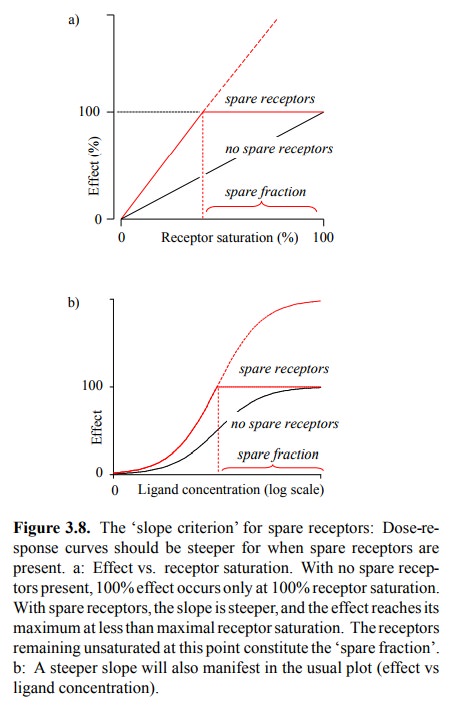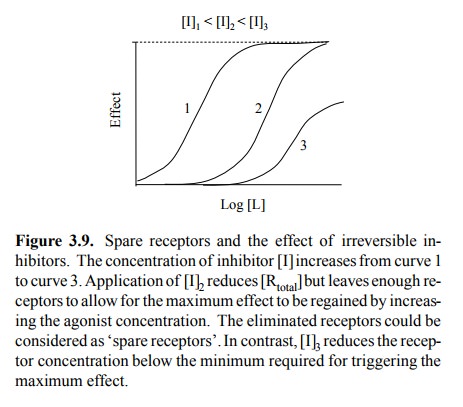Chapter: Biochemical Pharmacology : Pharmacodynamics
Spare receptors
Spare receptors
If, as in the above example,
some of the receptors can be in-activated without a decrease in the maximal
effect, the dis-pensble receptor fraction is commonly referred to as `spare
receptors'. Despite its widespread use in the literature, the term is not very
precisely defined, and some argument ex-ists about its proper use. Some authors
consider a parallel shift of the dose-effect curve in response to an
irreversible inhibitor (as for curves 1 and 2 in Figure 3.9) sufficient
evi-dence of spare receptors. Using this interpretation, it would seem that any
system with an initial gap between dose-ef-fect and dose-receptor occupancy
curves would qualify. Others insist that not only should there be a gap between
dose-effect and dose-receptor occupancy curves, but that also the dose-effect
curve should be steeper than the dose-receptor occupancy curve.

The second position can be
summarized as follows: With or without spare receptors, each occupied receptor
molecule should make the same contribution toward the effect until the maximum
effect is reached. Therefore, with spare re-ceptors present, 100% of the effect
should be reached with less than 100% of the receptors occupied, which means
that the response curve for the function must be steeper than that for the
receptor occupancy (Figure 3.8). Note that this argument assumes a linear
relationship between receptor binding and functional effect. I therefore think
that the slope criterion is not generally applicable.

Related Topics